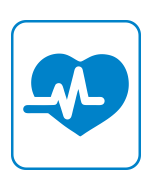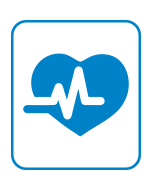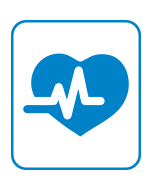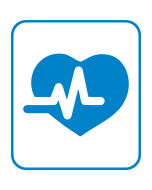US Clinical Decision Support Systems Market, Forecast to 2024
US Clinical Decision Support Systems Market, Forecast to 2024
A Growing Market with an Opportunity to be More than an Adjunct to the EHR
24-Jun-2019
North America
Description
Clinical Decision Support (CDS) systems are poised to become the user interface of choice for clinical interaction with health IT, ultimately supplanting the EHR system as the primary health IT point of interface for clinicians. This is due the fact that CDS began as a way to deliver medical content and patient information to the caregiver. Unlike EHR systems that are primarily a way for physicians to document treatment protocols, CDS applications were designed to provide support for physicians during the course of their patient interactions. As a result, CDS systems, from the start, were designed with human factors in mind: how do physicians work, how do they interact with patients, and how do they use information to deliver that treatment? CDS systems, therefore, are much more user friendly and, because they must interface not only with EHR systems, but all manner of health IT systems, they are the logical choice to access most health IT systems. This research service explores the dynamics of CDS systems, the market for them, and the primary domains in which they are likely to prove useful.
This study is an update of the very successful 2017 CDS study published by Frost & Sullivan. This study focuses on the US clinical decision support system market. It covers the primary areas of CDS systems subdivided into the primary areas in which CDS systems are currently being applied: clinical knowledge and medical evidence, healthcare analytics, workflow solutions, EHRs, medical devices, data support, clinical surveillance, and CDS platforms. These areas are combined for market growth predictions into: evidence, CDS analytics, workflow, and point of care solutions. Each is projected to grow through the analysis horizon, with especially robust growth in the point of care area.
Overall, the US CDS market is forecast to grow at a CAGR of 9.3% and revenues will top $6.47 billion in the US by 2024. Yet this projection could be conservative when rapid evolutions in medical technology and healthcare regulation are taken into account. In particular, changes in HHS regulations involving interoperability are likely to drive the demand for CDS capabilities, as the regulatory regime becomes much more complex. Additionally, as the Internet of Things (IoT) enables a vast new pool of medical telemetry, CDS will be the key to integrating those new data sources into the clinical work flow.
This research services will be insightful for those looking at understand this rapidly evolving market and the key participants that are driving it.
Author: Michael Jude
RESEARCH: INFOGRAPHIC
This infographic presents a brief overview of the research, and highlights the key topics discussed in it.Click image to view it in full size

Table of Contents
Key Findings
Key Findings (continued)
Key Findings (continued)
Key Findings (continued)
Scope and Segmentation
Key Questions this Study will Answer
Market Engineering Measurements
CEO’s Perspective
Executive Summary—3 Big Predictions
Why Clinical Decision Support?
Calculation of Clinical Workflow Efficiency—Process Throughput
Calculation of Clinical Workflow Efficiency—Process Efficiency
Impact of Clinical Decision Support Impact on the Efficiency and Efficacy of the Clinical Workflow
Impact of CDSS
Integrating Qualitative and Quantitative Considerations
CDSS Market Segments
Clinical Knowledge and Medical Evidence
Healthcare Analytics
CDS Workflow Solutions
EHRs
Medical Devices
CDSS Data Support
Clinical Surveillance
CDSS Platforms
Market Structure Reflects the Technical and Logical Attributes of CDSS
Technical Components of CDSS—Electronic Health Record
Technical Components of CDSS—Data Repository
Technical Components of CDSS—Computerized Physician Order Entry System
Technical Components of CDSS—Rules and Inference Engines
Common CDSS Formats
Logical Attributes—CDSS Data Interoperability Challenges
CDSS as a Part of a Clinical Workflow Continuum
Market Drivers
Market Drivers—Managing Costs
Market Drivers—Managing Complexity
Market Drivers—Value-based Medicine
Market Drivers—Altering Patient Behavior
Market Drivers—Data From Monitors and Other Devices
Market Drivers—Data From Monitors and Other Devices (continued)
Market Restraints
Market Restraints—Limited Interoperability and Data Security
Market Restraints—Cost of Implementation
Market Restraints—Physician Resistance
Market Restraints—Physician Resistance (continued)
Market Restraints—Balancing Sensitivity and Specificity
Market Restraints—Maintaining Currency
Market Restraints—Measuring the Impact of CDSS
Market Engineering Measurements
Forecast Assumptions
CDSS Market Segmentation
CDSS Market—Revenue Forecast
CDSS Market—Revenue Forecast Discussion
CDS Evidence Segment—Revenue Forecast
CDS Evidence Segment—Revenue Forecast Discussion
CDS Analytics Segment—Revenue Forecast
CDS Analytics Segment—Revenue Forecast Discussion
CDSS Workflow Segment—Revenue Forecast
CDSS Workflow Segment—Revenue Forecast Discussion
Medical Point-of-care Solution Segment—Revenue Forecast
Medical Point-of-care Segment—Revenue Forecast Discussion
CDSS Market—US Technology Trends and Roadmap, 2018
Competitive Market Structure
Segmenting the CDSS Market—Representative Companies
Top Competitors—Comparative Assessment
New Entrants—Comparative Assessment
Recent Notable Deals
Recent Notable Deals (continued)
Recent Notable Deals (continued)
Recent Notable Deals (continued)
Recent Notable Deals (continued)
Recent Notable Deals (continued)
Recent Notable Deals (continued)
Likely Market Directions—The Analyst Perspective
CDSS Market—Conclusions
CDSS Market—Conclusions (continued)
Five Growth Opportunities Critical for Future Strategy
Levers for Growth
Growth Opportunity 1—Create Fully Interoperable EHRs
Growth Opportunity 2—Extend CDS to Population Health
Growth Opportunity 3—Advance Clinical Surveillance
Growth Opportunity 4—Eliminate Alert Fatigue
Growth Opportunity 5—Include the Patient in CDSS
The CDSS Ecosystem—Multiple Technologies Add Value
Strategic Imperatives for CDSS
The Last Word—3 Big Predictions
Legal Disclaimer
Market Engineering Methodology
CDSS—Various Definitions
Defining the Five Rights of CDSS
CDSS Fits With Population Health Management
CDSS Terminology Standards
CDSS Applications Standards
CDSS Standards for Executable Formats
CDSS Standards for Clinical Interoperability
Overview of CDSS Stakeholders
Key Stakeholders in Clinical Decision Support—Physicians
Key Stakeholders in Clinical Decision Support—Other Clinicians and Patients
Key Stakeholders in Clinical Decision Support—Payers and ACOs
Key Stakeholders in Clinical Decision Support—Hospital Managers and Vendors
CDSS and Radiology—Special Issues
Selected Sources
Selected Sources (continued)
List of Exhibits
Popular Topics
| No Index | No |
|---|---|
| Podcast | No |
| Author | Michael Jude |
| Industries | Healthcare |
| WIP Number | K360-01-00-00-00 |
| Is Prebook | No |
| GPS Codes | 9564-B1,9600-B1,9612-B1 |
 USD
USD GBP
GBP CNY
CNY EUR
EUR INR
INR JPY
JPY MYR
MYR ZAR
ZAR KRW
KRW THB
THB




